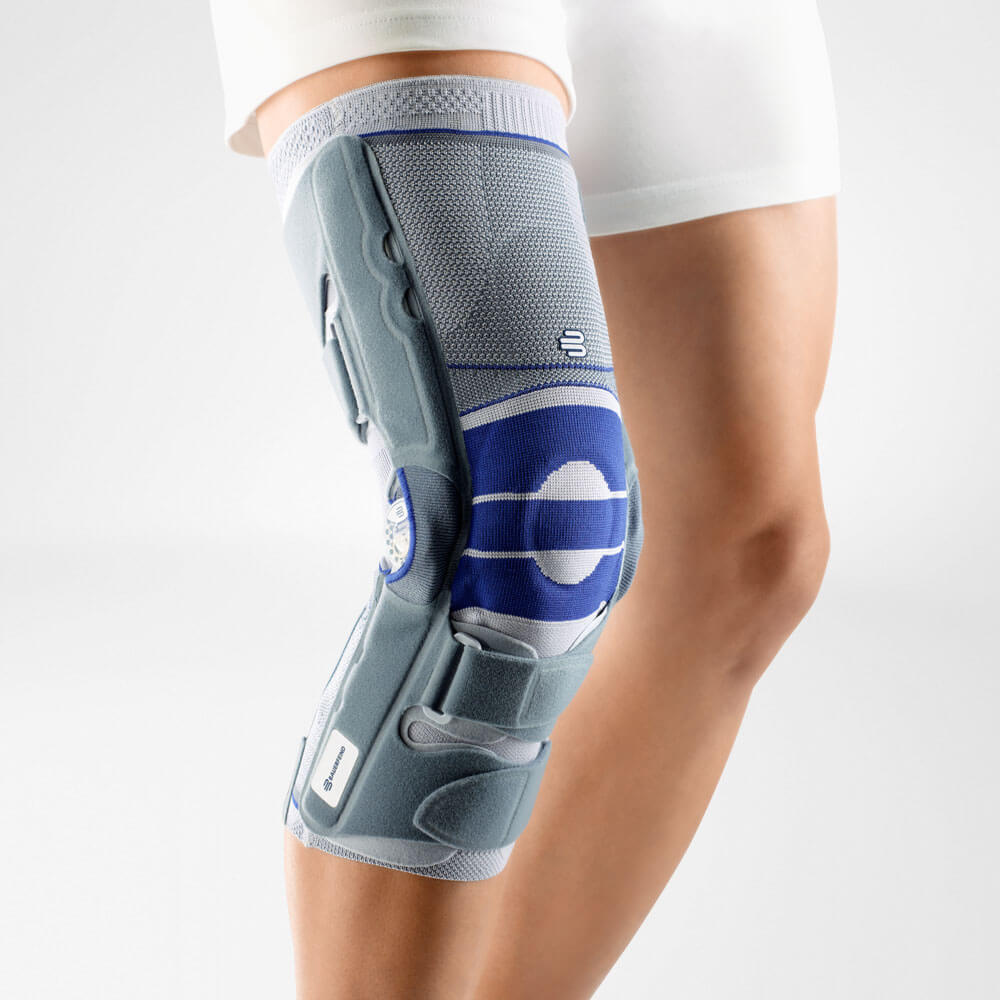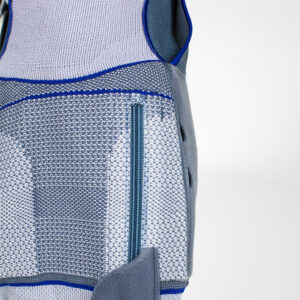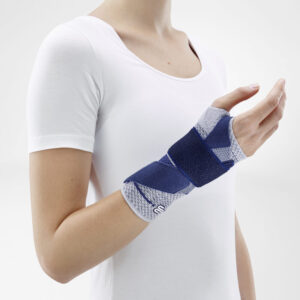Features
- The contoured knit is breathable and provides large surface area contact with the leg.
- Because the anatomically shaped fabric provides large surface area contact with the leg, it prevents local pressure points from forming and it supports muscle activity.
- The anatomically knitted material consists of sections that are inelastic in one direction and other sections with particularly high-tension stability.
- Four inelastic Velcro straps produce a stable, circular frictional connection.
- The lateral aluminum sidebars are anatomically contoured.
- Special orthosis hinges adapt themselves, independently of each other, to the compromise pivot points and thus take into account the position of the individual compromise axis of rotation of the knee in three-dimensional space.
- The hinges permit restriction of extension and flexion in 10° intervals.
- The pad ensures simple and correct positioning of the orthosis against the leg.
Mode of Action
- The tension-stable inelastic knitted section in combination with the sidebars and Velcro straps stabilize the knee in a 4-point system.
- Because the fabric is flexible, the orthosis allows muscle movements to occur simultaneously.
- The three-dimensional adjustment of the orthosis hinges to the individual compromise axis of rotation avoids harmful constraining forces on the knee.
- The pad supports the correct positional control of the patella and counteracts anterior knee pain.
- The compression knit and pad massage to accelerate the reabsorption of effusions and edematous swellings.
- Stimulation of the proprioceptors by the special knit has a positive effect on the sensorimotor system and thus on muscle control.
Indications
- Rupture of the anterior cruciate ligament (ACL)
– Conservative treatment
– Pre-operative and delayed post-operative treatment
– Long-term rehabilitation – sports therapy
– Chronic insufficiency - Severe and/or complex instability (traumatic, degenerative; e.g. “unhappy triad“)
- Functional instability (e.g. lack of neuromuscular control)
- Conservative functional treatment of collateral ligament injuries
- Treatment of “unstable knee joint“
– Severe osteoarthritis of the knee
– Rheumatoid arthritis – progressive chronic polyarthritis
– Endoprosthesis – secondary rehabilitation
– Traumatology – post-traumatic - To restrict the range of movement of the knee (e.g. after meniscal suturing or meniscal implantation)
How to Measure
Flex knees (30 degrees) and mark the centre of the patella. Measure the circumference of the leg at this point, 17 cm above this point (A), and 15 cm below this point (B).

Size
1
2
3
4
5
6
(A)
38-42
41-45
44-49
48-53
51-57
54-60
(Knee)
29-32
32-35
35-38
38-41
41-44
44-47
(B)
28-32 cm
31-35 cm
34-38 cm
36-40 cm
39-43 cm
42-46 cm



























